 Search by Keyword
|
"HEY BULLDOG"
(John Lennon – Paul McCartney)
"John and George were going off to Rishekesh with the idea that this might be some huge spiritual lift-off and they might never come back if Maharishi told them some really amazing thing." This quote by Paul McCartney from his book "Many Years From Now" is very revealing.
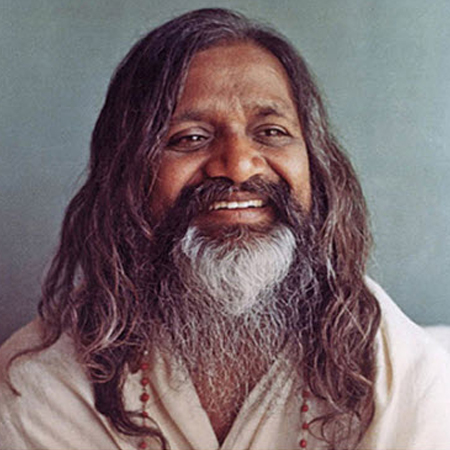 Having met Maharishi Mahesh Yogi in 1967 as well as becoming impressed by his teachings about Transcendental Meditation, The Beatles decided to spend a good portion of 1968 in India for further meditation practice at his ashram in the foothills of the Himalayas. But for George and John, as the above quote asserts, they flirted seriously with the idea that they may never return from India, which may very well have been the end of The Beatles at that point. Having met Maharishi Mahesh Yogi in 1967 as well as becoming impressed by his teachings about Transcendental Meditation, The Beatles decided to spend a good portion of 1968 in India for further meditation practice at his ashram in the foothills of the Himalayas. But for George and John, as the above quote asserts, they flirted seriously with the idea that they may never return from India, which may very well have been the end of The Beatles at that point.
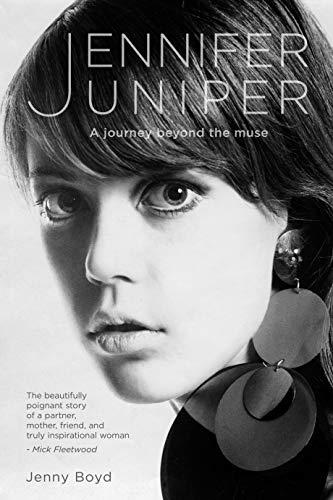 John and George, with their wives and Patti Boyd's sister Jenny Boyd, flew out to India on February 15th, 1968, possibly never to return. Paul and Ringo flew out four days later. But before they left, 'Beatles business' needed to be taken care of. In their absence, the powers-that-be insisted that they record a single to be released while the group was away so as to keep them in the charts and satisfy their fans. John and George, with their wives and Patti Boyd's sister Jenny Boyd, flew out to India on February 15th, 1968, possibly never to return. Paul and Ringo flew out four days later. But before they left, 'Beatles business' needed to be taken care of. In their absence, the powers-that-be insisted that they record a single to be released while the group was away so as to keep them in the charts and satisfy their fans.
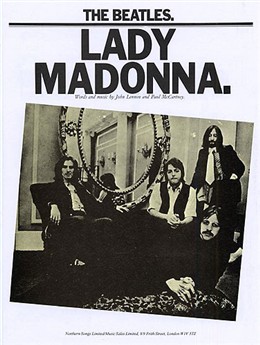 Four recording sessions took place in early February, 1968 to accomplish this, the result being the single “Lady Madonna” backed with “The Inner Light,” another track composed by John, “Across The Universe,” being put to tape as well. Then, on February 11th, four days before John and George's departure, The Beatles entered the recording studio again for the purpose of shooting a promo film for “Lady Madonna.” However, John had just written another song, with a slight bit of help from Paul, which ended up being called “Hey Bulldog,” and they decided to use this studio time to record this new song, with the camera crew filming their every move. Four days later, John and George were off to India. Four recording sessions took place in early February, 1968 to accomplish this, the result being the single “Lady Madonna” backed with “The Inner Light,” another track composed by John, “Across The Universe,” being put to tape as well. Then, on February 11th, four days before John and George's departure, The Beatles entered the recording studio again for the purpose of shooting a promo film for “Lady Madonna.” However, John had just written another song, with a slight bit of help from Paul, which ended up being called “Hey Bulldog,” and they decided to use this studio time to record this new song, with the camera crew filming their every move. Four days later, John and George were off to India.
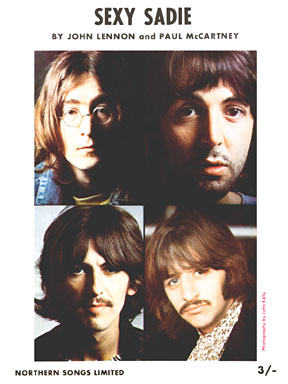 If John had never returned, “Hey Bulldog” could possibly have been the last John Lennon composition The Beatles had ever recorded, or maybe even the very last Beatles song ever. Could we even imagine a world where John Lennon's music career, let alone The Beatles career, would end at this point? In this alternate reality, “Hey Bulldog” would be the last we would ever have heard from John Lennon, songwriter, musician and Beatle! As interesting and innovative as that song is, we can be very grateful that John became disenchanted with the Maharishi a couple of months later and did indeed return to England and the music world. If John had never returned, “Hey Bulldog” could possibly have been the last John Lennon composition The Beatles had ever recorded, or maybe even the very last Beatles song ever. Could we even imagine a world where John Lennon's music career, let alone The Beatles career, would end at this point? In this alternate reality, “Hey Bulldog” would be the last we would ever have heard from John Lennon, songwriter, musician and Beatle! As interesting and innovative as that song is, we can be very grateful that John became disenchanted with the Maharishi a couple of months later and did indeed return to England and the music world.
Songwriting History
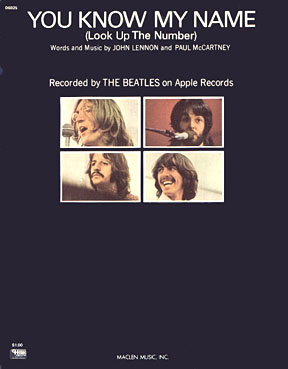 "They wanted another song, so I knocked off 'Hey Bulldog,'" Lennon stated in 1980, adding: "It's a good-sounding record that means nothing." With four new songs required by them for the soundtrack to the animated movie "Yellow Submarine," The Beatles thought they filled this requirement by mid 1967. However, the first new song they recorded for the film, "Baby You're A Rich Man," was already released as a b-side to the highly successful single "All You Need Is Love," both sides of which hitting the Top 40 on the US Billboard Hot 100. They had also begun recording the song "You Know My Name (Look Up The Number)" for inclusion in the film, but it was deemed unsuitable and decided against. Therefore, another song was needed. "They wanted another song, so I knocked off 'Hey Bulldog,'" Lennon stated in 1980, adding: "It's a good-sounding record that means nothing." With four new songs required by them for the soundtrack to the animated movie "Yellow Submarine," The Beatles thought they filled this requirement by mid 1967. However, the first new song they recorded for the film, "Baby You're A Rich Man," was already released as a b-side to the highly successful single "All You Need Is Love," both sides of which hitting the Top 40 on the US Billboard Hot 100. They had also begun recording the song "You Know My Name (Look Up The Number)" for inclusion in the film, but it was deemed unsuitable and decided against. Therefore, another song was needed.
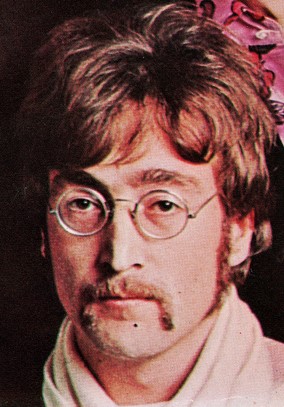 When the group became aware that they needed to come up with another song, presumably during their February 1968 recording sessions, John got to work. Knowing they were going to be in EMI Studios to film the “Lady Madonna” promo clip, they thought they would kill two birds with one stone. “Paul said we should do a real song in the studio,” Lennon explains, “Could I whip one off? I had a few words at home so I brought them in.” When the group became aware that they needed to come up with another song, presumably during their February 1968 recording sessions, John got to work. Knowing they were going to be in EMI Studios to film the “Lady Madonna” promo clip, they thought they would kill two birds with one stone. “Paul said we should do a real song in the studio,” Lennon explains, “Could I whip one off? I had a few words at home so I brought them in.”
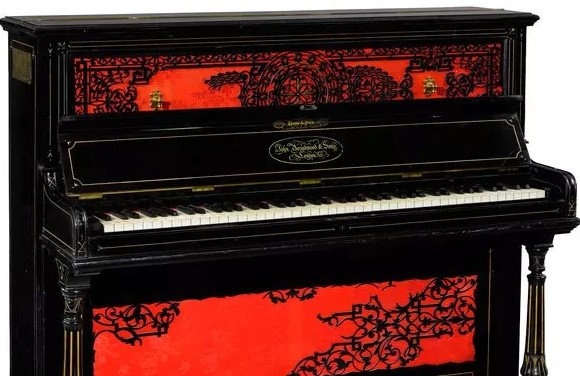 The “few words” he had were recently recorded in his home recording studio as a rough demo. This demo consisted of himself double-tracked on both piano and organ as well as double-tracked vocals, focusing primarily on the rising piano figure heard in the song's refrain. The lyrics at this point were “She can talk to me / if she's lonely she can talk to me / Tuesday sitting cozy in my room / but there's nothing new / nothing she can say / She can talk to me...” The “few words” he had were recently recorded in his home recording studio as a rough demo. This demo consisted of himself double-tracked on both piano and organ as well as double-tracked vocals, focusing primarily on the rising piano figure heard in the song's refrain. The lyrics at this point were “She can talk to me / if she's lonely she can talk to me / Tuesday sitting cozy in my room / but there's nothing new / nothing she can say / She can talk to me...”
 John took to fleshing out the majority of the song by himself and then bringing it into the studio on February 11th, 1968. “At one point, Paul was helping John with the lyrics,” engineer Geoff Emerick recalls the day the song was being recorded, “but most of the song seemed to have been written and worked out before they got to the studio.” In his book “Many Years From Now,” Paul concurs. “I remember 'Hey Bulldog' as being one of John's songs and I helped him finish it off in the studio, but it's mainly his vibe.” John took to fleshing out the majority of the song by himself and then bringing it into the studio on February 11th, 1968. “At one point, Paul was helping John with the lyrics,” engineer Geoff Emerick recalls the day the song was being recorded, “but most of the song seemed to have been written and worked out before they got to the studio.” In his book “Many Years From Now,” Paul concurs. “I remember 'Hey Bulldog' as being one of John's songs and I helped him finish it off in the studio, but it's mainly his vibe.”
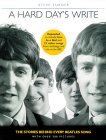 Steve Turner's book “A Hard Day's Write” gives a bit of detail concerning the completion of the writing in the studio on that day. “John explained to the others how he heard the song and they all threw in suggestions for the words. One line John had written – 'Some kind of solitude is measured out in news' – was misread and came out as 'Some kind of solitude is measured out in you.' They decided to keep it.” Steve Turner's book “A Hard Day's Write” gives a bit of detail concerning the completion of the writing in the studio on that day. “John explained to the others how he heard the song and they all threw in suggestions for the words. One line John had written – 'Some kind of solitude is measured out in news' – was misread and came out as 'Some kind of solitude is measured out in you.' They decided to keep it.”
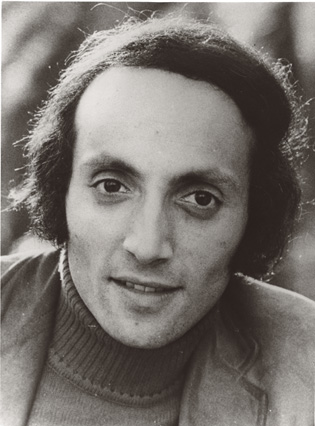 There is one claim to the significance of the title “Hey Bulldog” which may or may not have credibility. Erich Segal, one of the screenwriters of the “Yellow Submarine” movie and the soon-to-be author of “Love Story,” suggests that this song's title was chosen because the bulldog was the mascot of Yale University where he was a lecturer in classes at that time. There is one claim to the significance of the title “Hey Bulldog” which may or may not have credibility. Erich Segal, one of the screenwriters of the “Yellow Submarine” movie and the soon-to-be author of “Love Story,” suggests that this song's title was chosen because the bulldog was the mascot of Yale University where he was a lecturer in classes at that time.
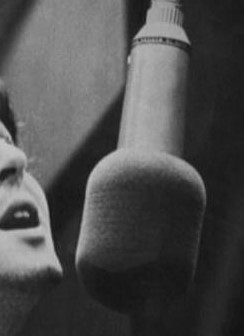 However, the title of the song apparently was not chosen until the day of its recording. The word “bullfrog” is in the lyrics, but “hey bulldog” is only repeated at the end of the recording after Paul decided to bark like a dog during their vocal overdub, both of them singing into the same microphone. This apparently spurred John on to start singing “Hey bulldog” which was then harmonized by Paul afterwards. Whether John had Erich Segal's Yale mascot in mind when he started blurting out “Hey bulldog” seems unlikely but remotely possible. However, the title of the song apparently was not chosen until the day of its recording. The word “bullfrog” is in the lyrics, but “hey bulldog” is only repeated at the end of the recording after Paul decided to bark like a dog during their vocal overdub, both of them singing into the same microphone. This apparently spurred John on to start singing “Hey bulldog” which was then harmonized by Paul afterwards. Whether John had Erich Segal's Yale mascot in mind when he started blurting out “Hey bulldog” seems unlikely but remotely possible.
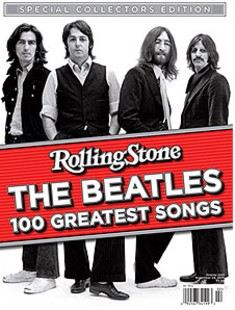 What is likely, however, is the reason why Paul started barking like a dog in the first place. As stated in the Rolling Stone Magazine's “The Beatles 100 Greatest Songs” special edition, “a few days earlier, McCartney had played drums on a Paul Jones rocker called 'The Dog Presides,' (with Jeff Beck on lead guitar, by the way) which had featured barking sound effects. During the Beatles' session, McCartney and Lennon ended up woofing and howling, and the title became 'Hey Bulldog.'" What is likely, however, is the reason why Paul started barking like a dog in the first place. As stated in the Rolling Stone Magazine's “The Beatles 100 Greatest Songs” special edition, “a few days earlier, McCartney had played drums on a Paul Jones rocker called 'The Dog Presides,' (with Jeff Beck on lead guitar, by the way) which had featured barking sound effects. During the Beatles' session, McCartney and Lennon ended up woofing and howling, and the title became 'Hey Bulldog.'"
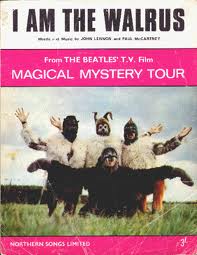 As for the song's lyrics, John appears to continue his nonsense rhetoric from the previous year's "I Am The Walrus," which was written in response to a letter he received from a student at Quarry Bank school who said his literature teacher was playing Beatles songs in class and discussing the meaning of the lyrics as part of his lessons. "Let the f*ckers work THAT one out," he said about "I Am The Walrus." Similarly, in "Hey Bulldog," John sings, "You think you know me but you haven't got a clue." As for the song's lyrics, John appears to continue his nonsense rhetoric from the previous year's "I Am The Walrus," which was written in response to a letter he received from a student at Quarry Bank school who said his literature teacher was playing Beatles songs in class and discussing the meaning of the lyrics as part of his lessons. "Let the f*ckers work THAT one out," he said about "I Am The Walrus." Similarly, in "Hey Bulldog," John sings, "You think you know me but you haven't got a clue."
Recording History
As mentioned above, John Lennon made a demo recording, presumably in early February of 1968, of a small snippet of a song idea in the music room of his Weybridge home. The raising piano figure which became the refrain of "Hey Bulldog" was repeated multiple times with the lyrics that include the line "she can talk to me," this being double-tracked vocally as well as on piano along with organ. John highly expanded on this idea just prior to bringing it into the studio for recording.
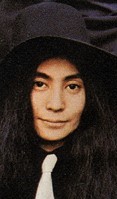 The day that John brought the song into EMI Studio Three for The Beatles to record was February 11th, 1968, this session beginning at 4 pm. Incidentally, as confirmed in John and Yoko's December 1970 Rolling Stone interview with Jann Wenner, this was the very first day that John's “friend” Yoko Ono was present at a Beatles recording session, she becoming an expected attendee at sessions from this point forward. Knowing that the intention for the song “Hey Bulldog,” or "You Can Talk To Me" as some stipulate being the working title for the song, was for the “Yellow Submarine” film, they sought to record it fully at one session as they had done for previous songs intended for this movie, namely “Baby You're A Rich Man” and “All Together Now,” creating the mono mix at the end of the session as well. Of course, knowing that they were leaving for India days later, they knew the song needed to be in a completed state at the end of this day. The day that John brought the song into EMI Studio Three for The Beatles to record was February 11th, 1968, this session beginning at 4 pm. Incidentally, as confirmed in John and Yoko's December 1970 Rolling Stone interview with Jann Wenner, this was the very first day that John's “friend” Yoko Ono was present at a Beatles recording session, she becoming an expected attendee at sessions from this point forward. Knowing that the intention for the song “Hey Bulldog,” or "You Can Talk To Me" as some stipulate being the working title for the song, was for the “Yellow Submarine” film, they sought to record it fully at one session as they had done for previous songs intended for this movie, namely “Baby You're A Rich Man” and “All Together Now,” creating the mono mix at the end of the session as well. Of course, knowing that they were leaving for India days later, they knew the song needed to be in a completed state at the end of this day.
 In his book “Here, There And Everywhere,” engineer Geoff Emerick describes the events of this session. “Even though it was destined to be given to the 'Yellow Submarine' film, 'Hey Bulldog' was a really strong song. The vibe that day was great – all four Beatles were in an exceptionally good mood because they knew they would be heading to India in a matter of days. Despite the fact that there was a film crew underfoot, it was a Sunday session, so things were quite relaxed – the Abbey Road complex was largely deserted, and the band could wander around the corridors if they wanted to.” In his book “Here, There And Everywhere,” engineer Geoff Emerick describes the events of this session. “Even though it was destined to be given to the 'Yellow Submarine' film, 'Hey Bulldog' was a really strong song. The vibe that day was great – all four Beatles were in an exceptionally good mood because they knew they would be heading to India in a matter of days. Despite the fact that there was a film crew underfoot, it was a Sunday session, so things were quite relaxed – the Abbey Road complex was largely deserted, and the band could wander around the corridors if they wanted to.”
 With the cameras rolling, John gave instructions to George Martin in the control room, which was captured on the original tape. “Just tell us when we get a good one,” he requested, which was then followed by ten takes of the rhythm track. Because we can view the promo film for “Lady Madonna” which was filmed on this day, as well as the later assembled video film for “Hey Bulldog,” this Beatles song is the most documented as to the recording process they use. The rhythm track, as we can see, consisted of John on piano, George on his Gibson SG Standard electric guitar, Paul playing two tambourines and Ringo on drums. Earlier takes of the rhythm track featured Paul on bass as seen in the filmed footage, but apparently it was decided that he would play tambourines on the rhythm track instead and then perfect his bass part as an overdub later. With the cameras rolling, John gave instructions to George Martin in the control room, which was captured on the original tape. “Just tell us when we get a good one,” he requested, which was then followed by ten takes of the rhythm track. Because we can view the promo film for “Lady Madonna” which was filmed on this day, as well as the later assembled video film for “Hey Bulldog,” this Beatles song is the most documented as to the recording process they use. The rhythm track, as we can see, consisted of John on piano, George on his Gibson SG Standard electric guitar, Paul playing two tambourines and Ringo on drums. Earlier takes of the rhythm track featured Paul on bass as seen in the filmed footage, but apparently it was decided that he would play tambourines on the rhythm track instead and then perfect his bass part as an overdub later.
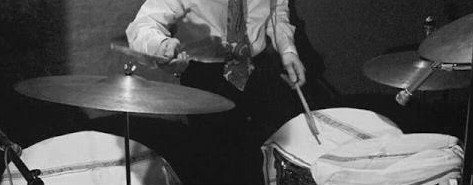 "Take four," which could later be heard on "Anthology 4," consisted of two false starts before they got the take in motion. The first false start showed Paul experimenting on tambourine (this most likely being the first take that Paul played tambourine), which propmted John to call it to a halt. Paul asked, "You didn't like?" John chuckled and said, "I didn't like the rhythm actually." Lennon counted off another attempt but flubbed the first piano chord so he immediately counted off the song again. This attempt made it all the way through the song, which featured vibrant drum fills from Ringo that did unfortunately drift off of proper timing at times, the drummer utilizing "tea towels" draped over his drum heads in order to dampen the sound. Both John and George play meticulously all the way through the song, both hitting a stray note on different occassions that was undoubtedly the reason why this take was not deemed worthy for overdubs. "Veering between 'yer blues' and 'yer comedy," John exclaimed afterwards, forshadowing his use of the title "Yer Blues" for his "White Album" contribution that he reportedly began writing sometime that month. "Take four," which could later be heard on "Anthology 4," consisted of two false starts before they got the take in motion. The first false start showed Paul experimenting on tambourine (this most likely being the first take that Paul played tambourine), which propmted John to call it to a halt. Paul asked, "You didn't like?" John chuckled and said, "I didn't like the rhythm actually." Lennon counted off another attempt but flubbed the first piano chord so he immediately counted off the song again. This attempt made it all the way through the song, which featured vibrant drum fills from Ringo that did unfortunately drift off of proper timing at times, the drummer utilizing "tea towels" draped over his drum heads in order to dampen the sound. Both John and George play meticulously all the way through the song, both hitting a stray note on different occassions that was undoubtedly the reason why this take was not deemed worthy for overdubs. "Veering between 'yer blues' and 'yer comedy," John exclaimed afterwards, forshadowing his use of the title "Yer Blues" for his "White Album" contribution that he reportedly began writing sometime that month.
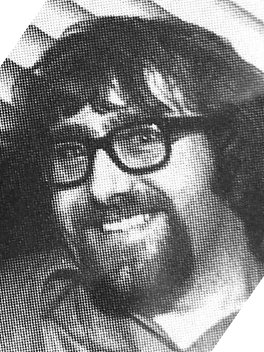 "Take ten" was the “good one” John had been looking for, overdubs being added onto this. Geoff Emerick continued: “After the band got the rhythm track down, everyone was hungry, so Mal (Evans) went down to the canteen (he had the key by now) and brought back some baked beans on toast, which was a particular favorite of Harrison's. You can actually see them enjoying the impromptu meal at the beginning of the (“Lady Madonna”) video, with everyone in high spirits.” "Take ten" was the “good one” John had been looking for, overdubs being added onto this. Geoff Emerick continued: “After the band got the rhythm track down, everyone was hungry, so Mal (Evans) went down to the canteen (he had the key by now) and brought back some baked beans on toast, which was a particular favorite of Harrison's. You can actually see them enjoying the impromptu meal at the beginning of the (“Lady Madonna”) video, with everyone in high spirits.”
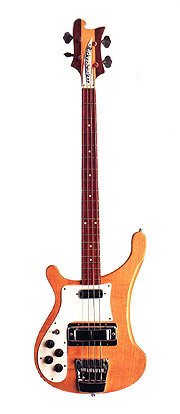 Overdubs then commenced. Paul recorded his Rickenbacker bass guitar through a fuzz box while Ringo played, as the book “The Beatles Recording Sessions” called it, “deliberately off-beat drums.” George then overdubbed a stunning lead guitar solo. “Everyone's performance was excellent on that track,” Geoff Emerick continues. “Paul's bass line was probably the most inventive of any he'd done since 'Pepper,' and it was really well played. Harrison's solo was sparkling, too – one of the few times that he nailed it right away. His amp was turned up really loud, and he used one of his new fuzz boxes, which made his guitar absolutely scream.” Overdubs then commenced. Paul recorded his Rickenbacker bass guitar through a fuzz box while Ringo played, as the book “The Beatles Recording Sessions” called it, “deliberately off-beat drums.” George then overdubbed a stunning lead guitar solo. “Everyone's performance was excellent on that track,” Geoff Emerick continues. “Paul's bass line was probably the most inventive of any he'd done since 'Pepper,' and it was really well played. Harrison's solo was sparkling, too – one of the few times that he nailed it right away. His amp was turned up really loud, and he used one of his new fuzz boxes, which made his guitar absolutely scream.”
 Another important overdub was the vocals. John sang lead vocals while Paul added harmony, both singing into one microphone simultaneously. Mark Lewisohn, in the above mentioned “Recording Sessions” book, details this vocal overdub: “It was standard practice for The Beatles to ad-lib and mess around after they had reached the point where the song would be faded out on record. In 'Hey Bulldog,' they duly began barking, shouting and screaming.” Geoff Emerick concurs: “John and Paul gathered around a microphone for several minutes of barking, howling, and general clowning around. For those moments they were again the inseparable childhood friends they had once been, uninhibited and completely comfortable in each others presence.” Since this "clowning around" is also heard durng the guitar solo section of the song, this briefly overlapping into the verse that follows while their voices are simultaneously heard singing the verse, it appears that John and Paul also separately overdubbed these extraneous shouts and mumbles here as well. With this complete, John then double-tracked his vocals during the refrains which completed the recording of the song, filling all four tracks of the four-track tape, no reduction mixes needed. Another important overdub was the vocals. John sang lead vocals while Paul added harmony, both singing into one microphone simultaneously. Mark Lewisohn, in the above mentioned “Recording Sessions” book, details this vocal overdub: “It was standard practice for The Beatles to ad-lib and mess around after they had reached the point where the song would be faded out on record. In 'Hey Bulldog,' they duly began barking, shouting and screaming.” Geoff Emerick concurs: “John and Paul gathered around a microphone for several minutes of barking, howling, and general clowning around. For those moments they were again the inseparable childhood friends they had once been, uninhibited and completely comfortable in each others presence.” Since this "clowning around" is also heard durng the guitar solo section of the song, this briefly overlapping into the verse that follows while their voices are simultaneously heard singing the verse, it appears that John and Paul also separately overdubbed these extraneous shouts and mumbles here as well. With this complete, John then double-tracked his vocals during the refrains which completed the recording of the song, filling all four tracks of the four-track tape, no reduction mixes needed.
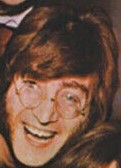 Something does need to be clarified regarding what is seen in the promo clips filmed on this day. John is seen on different occasions with a guitar in his hands, one being a staged performance with Paul on drums which was made specifically for the cameras, and then with George's Gibson SG Standard teaching him the guitar riff, then handing George his guitar afterward. This is not to say that John actually played guitar on the track as some assert, these scenes displaying the practical purposes outlined above. Something does need to be clarified regarding what is seen in the promo clips filmed on this day. John is seen on different occasions with a guitar in his hands, one being a staged performance with Paul on drums which was made specifically for the cameras, and then with George's Gibson SG Standard teaching him the guitar riff, then handing George his guitar afterward. This is not to say that John actually played guitar on the track as some assert, these scenes displaying the practical purposes outlined above.
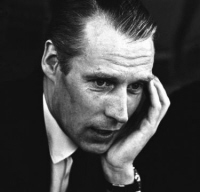 Before the session was over for the day, George Martin and engineers Geoff Emerick and Phil McDonald, along with The Beatles, worked at creating the mono mix for the song. Two mixes were made on this day, the second being deemed best. Mark Lewisohn relates: “During this day's mono remixing – done, incidentally, at 51 cycles per second – they decided to keep some of the extraneous material in.” Before the session was over for the day, George Martin and engineers Geoff Emerick and Phil McDonald, along with The Beatles, worked at creating the mono mix for the song. Two mixes were made on this day, the second being deemed best. Mark Lewisohn relates: “During this day's mono remixing – done, incidentally, at 51 cycles per second – they decided to keep some of the extraneous material in.”
 Paul explains why in his book “Many Years From Now”: “There's a little rap at the end between John and I, we went into a crazy little thing at the end. We always tried to make every song different because we figured, 'Why write something like the last one? We've done that.' We were always on a staircase to heaven, we were on a ladder so there was never any sense of stepping down a rung, or even of staying on the same rung; it was better to move one rung ahead...We liked to be inventive. It seemed to us to be crucial to never do the same thing twice, in fact, as they say now, 'They never did the same thing once!'” Of course, they did do this once before, allowing their vocal sound effects at the end of “Lovely Rita” to make it through to the final mixing stage, Lennon insisting during the recording process to “leave it.” Paul explains why in his book “Many Years From Now”: “There's a little rap at the end between John and I, we went into a crazy little thing at the end. We always tried to make every song different because we figured, 'Why write something like the last one? We've done that.' We were always on a staircase to heaven, we were on a ladder so there was never any sense of stepping down a rung, or even of staying on the same rung; it was better to move one rung ahead...We liked to be inventive. It seemed to us to be crucial to never do the same thing twice, in fact, as they say now, 'They never did the same thing once!'” Of course, they did do this once before, allowing their vocal sound effects at the end of “Lovely Rita” to make it through to the final mixing stage, Lennon insisting during the recording process to “leave it.”
Regarding this mono mix, Geoff Emerick recalls, “That was a really fun song. We were all into sound texture in those days and during the mixing we put ADT on one of the 'What did he say? Woof woof'' bits near the end of the song. It came out really well.”
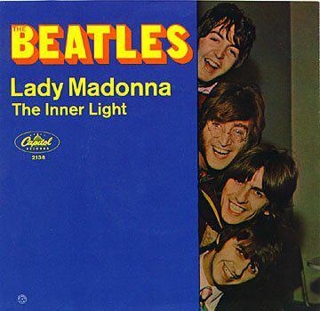 Emerick elaborates that the song “turned out so well there was some campaigning from Lennon that day for it to serve as the a-side of the single instead of 'Lady Madonna.' Naturally enough, Paul wasn't thrilled with the idea, but the discussion was ended by George Martin, who stated flatly that it was far too late to make the change because the record sleeves had already been printed. That may or may not have been true, but I suspect that George, like Paul, felt that 'Lady Madonna' was the more commercial song.” This being decided, the session ended at 2 am the following morning. Emerick elaborates that the song “turned out so well there was some campaigning from Lennon that day for it to serve as the a-side of the single instead of 'Lady Madonna.' Naturally enough, Paul wasn't thrilled with the idea, but the discussion was ended by George Martin, who stated flatly that it was far too late to make the change because the record sleeves had already been printed. That may or may not have been true, but I suspect that George, like Paul, felt that 'Lady Madonna' was the more commercial song.” This being decided, the session ended at 2 am the following morning.
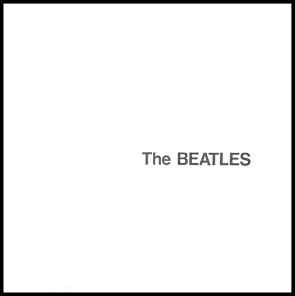 Since the “Yellow Submarine” soundtrack album was not to be released until after the “White Album,” a stereo mix wasn't made until October 29th, 1968 in preparation for the soundtrack's January 1969 release date. In George Martin's absence, Geoff Emerick and engineer Graham Kirkby created this stereo mix in the control room of EMI Studio Three, the third of three attempts being deemed best. Geoff Emerick decided to pull down the volume on the music during the few seconds of ending dialog between John and Paul that he applied ADT to, lifting up the volume again after that section was over. Since the “Yellow Submarine” soundtrack album was not to be released until after the “White Album,” a stereo mix wasn't made until October 29th, 1968 in preparation for the soundtrack's January 1969 release date. In George Martin's absence, Geoff Emerick and engineer Graham Kirkby created this stereo mix in the control room of EMI Studio Three, the third of three attempts being deemed best. Geoff Emerick decided to pull down the volume on the music during the few seconds of ending dialog between John and Paul that he applied ADT to, lifting up the volume again after that section was over.
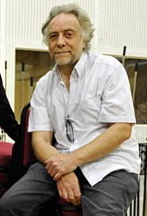 Sometime in 1999, the engineering team of Peter Cobbin, Paul Hicks, Mirek Stiles, Allan Rouse, Peter Mew and Steve Rooke returned to the master tape of “Hey Bulldog” to create a brand new stereo mix of the song. This new mix would be included in the newly mastered version of the “Yellow Sumbarine” film as released that year on VHS and DVD as well as on the accompanying album "Yellow Submarine Songtrack." As can be heard, they did not lower the volume of the music during the ADT applied "Do you know anymore" vocalizations of John and Paul near the end of the song. However, the clarity of the new mix is phenomenal, the track now being two seconds longer than the original. Sometime in 1999, the engineering team of Peter Cobbin, Paul Hicks, Mirek Stiles, Allan Rouse, Peter Mew and Steve Rooke returned to the master tape of “Hey Bulldog” to create a brand new stereo mix of the song. This new mix would be included in the newly mastered version of the “Yellow Sumbarine” film as released that year on VHS and DVD as well as on the accompanying album "Yellow Submarine Songtrack." As can be heard, they did not lower the volume of the music during the ADT applied "Do you know anymore" vocalizations of John and Paul near the end of the song. However, the clarity of the new mix is phenomenal, the track now being two seconds longer than the original.
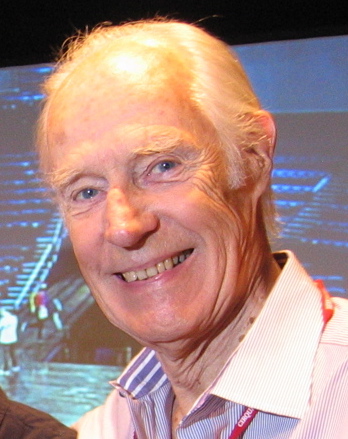 Not to be forgotten is George Martin and his son Giles Martin returning to the master tape of “Hey Bulldog” sometime between 2004 and 2006 for creating two tracks on the innovative album “Love.” The iconic guitar riff of the song is heard in the version of “Lady Madonna” that appears on the album, as does some of John and Paul's vocal banter on the track "Something (with Blue Jay Way transition)." Not to be forgotten is George Martin and his son Giles Martin returning to the master tape of “Hey Bulldog” sometime between 2004 and 2006 for creating two tracks on the innovative album “Love.” The iconic guitar riff of the song is heard in the version of “Lady Madonna” that appears on the album, as does some of John and Paul's vocal banter on the track "Something (with Blue Jay Way transition)."
 Giles Martin was then given the task in 2023 of creating a "demix remix" of "Hey Bulldog" for inclusion on the 50th Anniversary edition of the compilation album "The Beatles / 1967 - 1970" (aka "The Blue Album"). With Peter Jackson's AI technology at his disposal, Giles Martin was able to utilize this "new machine-learning techology" so that "individual elements that were put to tape...and were therefore impossible to separate" could be "untangled, allowing Giles to put the original recordings back together with even greater clarity and impact," as stated by John Harris in the liner notes of the above mentioned album. This is arguably the most vibrant and satisfying stereo version of the song to date. They once again gave added attention to detail by reducing the volume of the backing track during the "Do you know anymore" vocalizations as on the original, the added two seconds in length being included here as well. Giles Martin was then given the task in 2023 of creating a "demix remix" of "Hey Bulldog" for inclusion on the 50th Anniversary edition of the compilation album "The Beatles / 1967 - 1970" (aka "The Blue Album"). With Peter Jackson's AI technology at his disposal, Giles Martin was able to utilize this "new machine-learning techology" so that "individual elements that were put to tape...and were therefore impossible to separate" could be "untangled, allowing Giles to put the original recordings back together with even greater clarity and impact," as stated by John Harris in the liner notes of the above mentioned album. This is arguably the most vibrant and satisfying stereo version of the song to date. They once again gave added attention to detail by reducing the volume of the backing track during the "Do you know anymore" vocalizations as on the original, the added two seconds in length being included here as well.
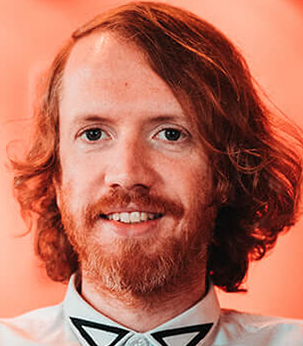 Sometime in 2025, producer Giles Martin, along with engineers Joe Wyatt and Greg McAllister, created a mix of the original EMI "take four" rhythm track for "Hey Bulldog" to be included on "Anthology 4," this being released in various editions in 2025 as detailed below. Sometime in 2025, producer Giles Martin, along with engineers Joe Wyatt and Greg McAllister, created a mix of the original EMI "take four" rhythm track for "Hey Bulldog" to be included on "Anthology 4," this being released in various editions in 2025 as detailed below.
Song Structure and Style
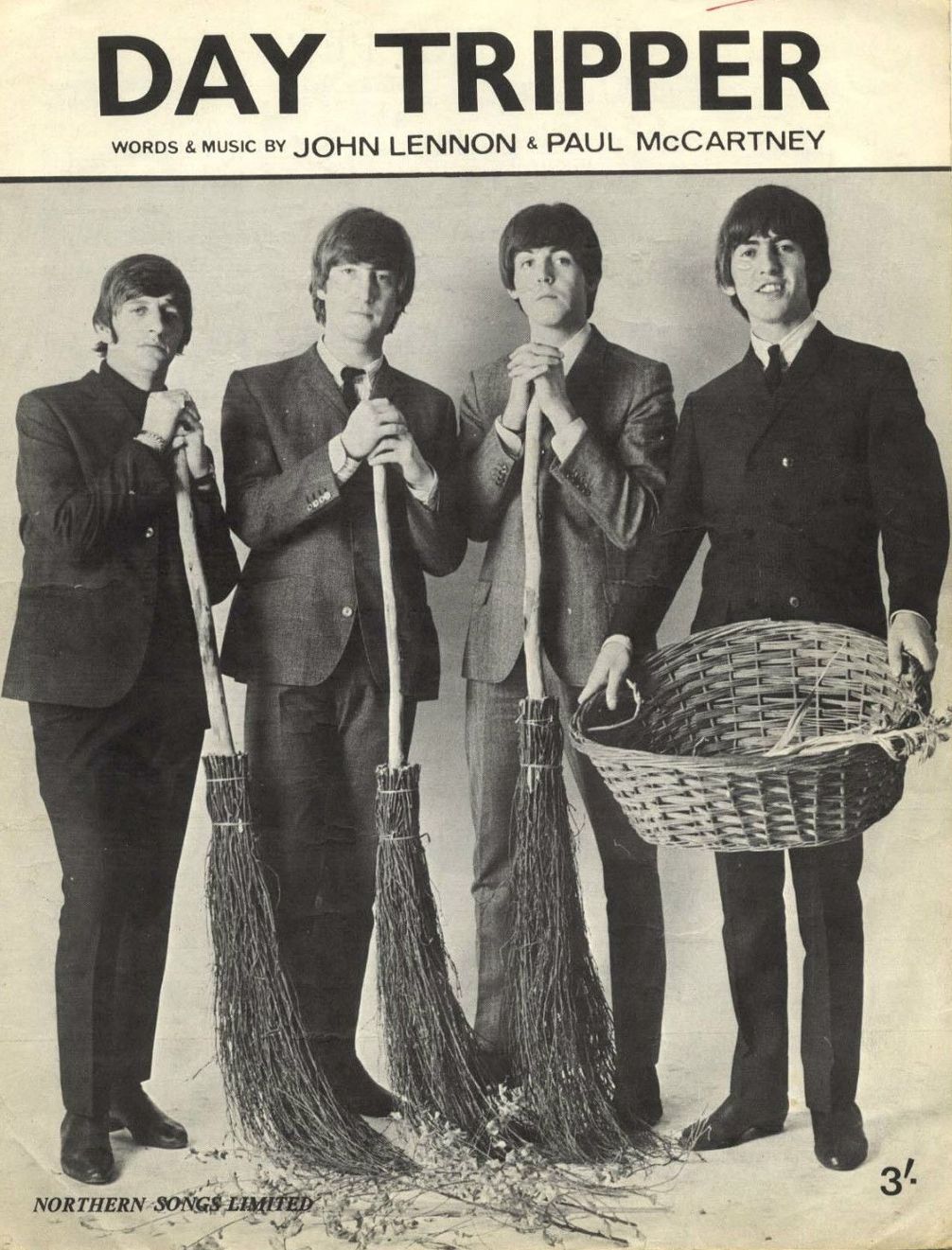 With "Hey Bulldog," The Beatles return to the tried-and-true format of writing a song around a two-measure riff, most notable in earlier tracks such as "You Can't Do That," "I Feel Fine" and, of course, "Day Tripper." Since the iron-clad riff that permeates "Hey Bulldog" is first heard at the beginning of the song, this recurring section will be referred to as the "intro" throughout its various appearances in the song. The structure for "Hey Bulldog," therefore, is 'intro/ verse/ verse/ refrain/ intro/ solo verse/ verse/ refrain/ intro' (or abbcabbca). With "Hey Bulldog," The Beatles return to the tried-and-true format of writing a song around a two-measure riff, most notable in earlier tracks such as "You Can't Do That," "I Feel Fine" and, of course, "Day Tripper." Since the iron-clad riff that permeates "Hey Bulldog" is first heard at the beginning of the song, this recurring section will be referred to as the "intro" throughout its various appearances in the song. The structure for "Hey Bulldog," therefore, is 'intro/ verse/ verse/ refrain/ intro/ solo verse/ verse/ refrain/ intro' (or abbcabbca).
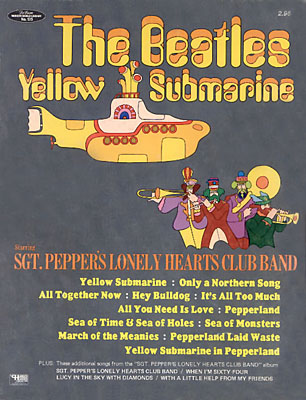 The first 'intro' is six measures long and comprises three repeats of the two-measure riff. Interestingly, John introduces this riff to us on piano only, this taking up the first two measures of this intro which sets the stage for the entire song. The next appearance of the riff adds George on lead guitar and Ringo on drums playing only the toms. The third riff then follows which adds Paul's bass playing the same riff as well as his tambourine hits on the first two eighth-note beats of each measure. Therefore, in the fifth and sixth measure of this introduction we hear John, Paul and George all playing the exact same riff on their usual instruments. The first 'intro' is six measures long and comprises three repeats of the two-measure riff. Interestingly, John introduces this riff to us on piano only, this taking up the first two measures of this intro which sets the stage for the entire song. The next appearance of the riff adds George on lead guitar and Ringo on drums playing only the toms. The third riff then follows which adds Paul's bass playing the same riff as well as his tambourine hits on the first two eighth-note beats of each measure. Therefore, in the fifth and sixth measure of this introduction we hear John, Paul and George all playing the exact same riff on their usual instruments.
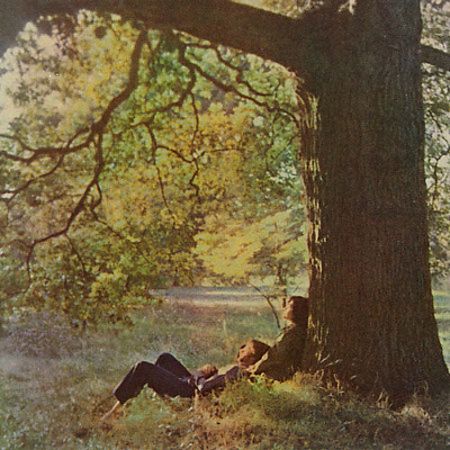 The first verse then begins, which is a standard eight measures long. The rhythm track of John on piano, Paul on tambourines, Ringo on drums and George on subdued guitar is heard as well as John and Paul's overdubbed vocals and Paul's overdubbed bass. Both Ringo and Paul play a very straightforward 4/4 beat on drums and tambourines while John plods along rhythmically on piano not unlike what we'll hear him do a couple years later on his solo song “Remember” from the “Plastic Ono Band” album. For the first four measures of the verse Paul harmonizes with John on the first phrase (such as “sheep dog”) while John sings the second phrase solo (such as “standing in the rain”), this repeating twice. John emphasizes the word “again” to rhyme with the previously sung “rain,” showing a bit of Liverpudlian humor. Paul then harmonizes with John throughout the remainder of the verse. The first verse then begins, which is a standard eight measures long. The rhythm track of John on piano, Paul on tambourines, Ringo on drums and George on subdued guitar is heard as well as John and Paul's overdubbed vocals and Paul's overdubbed bass. Both Ringo and Paul play a very straightforward 4/4 beat on drums and tambourines while John plods along rhythmically on piano not unlike what we'll hear him do a couple years later on his solo song “Remember” from the “Plastic Ono Band” album. For the first four measures of the verse Paul harmonizes with John on the first phrase (such as “sheep dog”) while John sings the second phrase solo (such as “standing in the rain”), this repeating twice. John emphasizes the word “again” to rhyme with the previously sung “rain,” showing a bit of Liverpudlian humor. Paul then harmonizes with John throughout the remainder of the verse.
The second verse comes immediately afterwards and is identical in instruments used and structure. Interesting to note in this verse is John's somewhat evil sounding “in your sweaty hands” in the fourth verse and the first prominent but slight appearance of George on guitar at the end of the sixth measure after the words “measured out in years.”
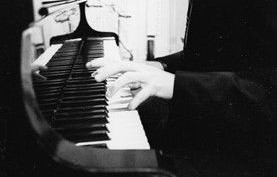 Then comes the first refrain which is five measures long and consists entirely of the words, sung double-tracked by John alone, “you can talk to me / you can talk to me / you can talk to me / if you're lonely you can talk to me.” This section is instrumentally identical to the previous verses, John's rising piano figure (as demonstrated in his home demo) being the primary focus. Just after his final lyric is sung, we go immediately into the next 'intro' section which is four measures long this time instead of six, the riff being repeated only twice instead of three times. The instrumentation here is similar to the final two measures of the first 'intro' but with George's highly distorted overdubbed guitar playing the riff on top of his guitar playing the same riff during the rhythm track. Paul's tambourine bashing moves from the first two beats of the measure to a steady 4/4 beat during the fourth measure as a segue into the solo verse that follows. Then comes the first refrain which is five measures long and consists entirely of the words, sung double-tracked by John alone, “you can talk to me / you can talk to me / you can talk to me / if you're lonely you can talk to me.” This section is instrumentally identical to the previous verses, John's rising piano figure (as demonstrated in his home demo) being the primary focus. Just after his final lyric is sung, we go immediately into the next 'intro' section which is four measures long this time instead of six, the riff being repeated only twice instead of three times. The instrumentation here is similar to the final two measures of the first 'intro' but with George's highly distorted overdubbed guitar playing the riff on top of his guitar playing the same riff during the rhythm track. Paul's tambourine bashing moves from the first two beats of the measure to a steady 4/4 beat during the fourth measure as a segue into the solo verse that follows.
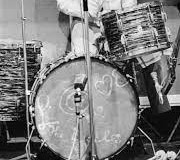 The solo verse is also eight measures long and features the same instruments from the rhythm track as well as Paul's overdubbed bass. The most noteworthy feature, obviously, is George's exuberant guitar solo which is well thought out and executed, distortion to the fore and high in the mix. Also heard as a subtle but interesting feature of this verse is a backdrop of voices from John and Paul which was purposely left in the mix just for fun. Ringo gets a little adventurous here as well, adding a drum fill in both the second and fourth measures. The solo verse is also eight measures long and features the same instruments from the rhythm track as well as Paul's overdubbed bass. The most noteworthy feature, obviously, is George's exuberant guitar solo which is well thought out and executed, distortion to the fore and high in the mix. Also heard as a subtle but interesting feature of this verse is a backdrop of voices from John and Paul which was purposely left in the mix just for fun. Ringo gets a little adventurous here as well, adding a drum fill in both the second and fourth measures.
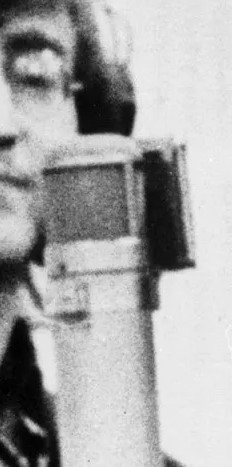 Another verse follows which is almost identical to the second verse, George's little guitar figure in the sixth measure and all. The very end of John and Paul's vocal shenanigans from the solo verse are carried over a little into the first measure of this verse, a voice (some sources say Ringo) uttering a “yeah” just after the lyric “big man.” A touch of cleverness is present in John and Paul's very quickly paced final line “haven't gotta clue.” This is followed by another refrain which is identical to the first. Another verse follows which is almost identical to the second verse, George's little guitar figure in the sixth measure and all. The very end of John and Paul's vocal shenanigans from the solo verse are carried over a little into the first measure of this verse, a voice (some sources say Ringo) uttering a “yeah” just after the lyric “big man.” A touch of cleverness is present in John and Paul's very quickly paced final line “haven't gotta clue.” This is followed by another refrain which is identical to the first.
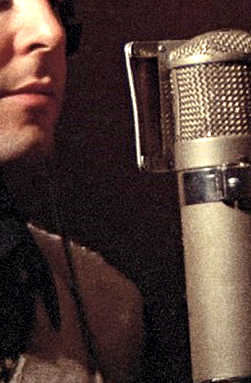 Next comes the final section of the song, the final intro that, in this case, is 29 measures long before it finally fades away. The first four measures are patterned after the four-measure second 'intro' heard earlier but without George's overdubbed highly distorted guitar. Vocally, however, we hear John belt out a double-tracked “hey” at the end of the first measure and Paul utter some dog barks in the third and fourth measure. Next comes the final section of the song, the final intro that, in this case, is 29 measures long before it finally fades away. The first four measures are patterned after the four-measure second 'intro' heard earlier but without George's overdubbed highly distorted guitar. Vocally, however, we hear John belt out a double-tracked “hey” at the end of the first measure and Paul utter some dog barks in the third and fourth measure.
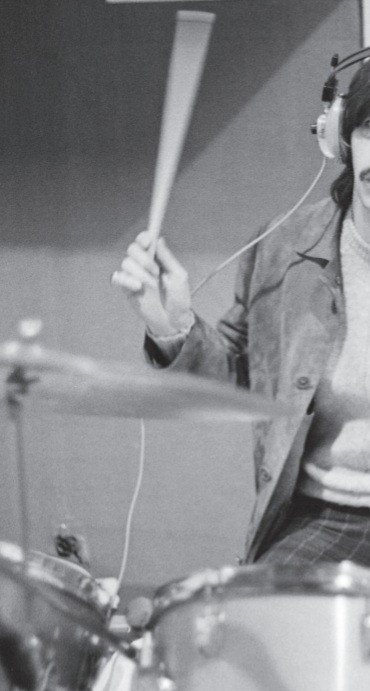 The remaining 25 measures of this 'intro' consist of an alternating of two chords back and forth and George adjusting the iconic two-measure riff to fit with the repeating chord changes. Ringo rides heavily on the cymbal for the remainder of the song, throwing in drum fills in measures 6, 8, 10 (this one with triplets), 12 and 18. John sings his first ad lib “Hey Bulldog” in measures 6-7, Paul joining in on harmony when it's repeated in measures 8-9, 10-11, 12-13, and then two more times as the song fades away in measures 26-27, and 28-29. Geoff Emerick pulls the faders down slightly on all the instruments when he was making the stereo mix during measures 14 through 19 to highlight John and Paul's silly dialog, which appears to be the following: The remaining 25 measures of this 'intro' consist of an alternating of two chords back and forth and George adjusting the iconic two-measure riff to fit with the repeating chord changes. Ringo rides heavily on the cymbal for the remainder of the song, throwing in drum fills in measures 6, 8, 10 (this one with triplets), 12 and 18. John sings his first ad lib “Hey Bulldog” in measures 6-7, Paul joining in on harmony when it's repeated in measures 8-9, 10-11, 12-13, and then two more times as the song fades away in measures 26-27, and 28-29. Geoff Emerick pulls the faders down slightly on all the instruments when he was making the stereo mix during measures 14 through 19 to highlight John and Paul's silly dialog, which appears to be the following:
Paul: “Hey man.”
John: “What's that boy?”
Paul: “Rooofff.”
John: “What do you say...I say....Rooofff...Do you know any more?...Roooooooo Rooofff...Aaaaah, ha ha.” (and then manic laughter for a few measures).
Paul: “You got it, that's it, you hit it, that's it, man, wooooh, that's it, you got it!...”
American Releases
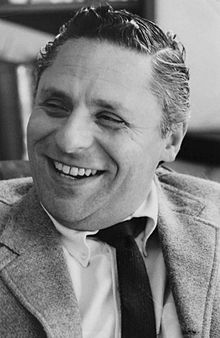 On January 13th, 1969, just a month and a half after after the Beatles "White Album" was released, the "Yellow Submarine" soundtrack album was on the market in the US. For those in America who went to see the movie and then bought the soundtrack album in order to hear new Beatles songs featured in the film, they were in for a pleasant surprise. Producer Al Brodax felt the movie was a little too long so an animated "Hey Bulldog" segment was cut out of all copies of the movie that were shown in many parts of the world, including the US, unlike the early copies of the film shown in Britain that did contain this animated footage. This excellent John Lennon song was, of course, contained on the soundtrack album nonetheless, this being an obvious highlight for most fans. On January 13th, 1969, just a month and a half after after the Beatles "White Album" was released, the "Yellow Submarine" soundtrack album was on the market in the US. For those in America who went to see the movie and then bought the soundtrack album in order to hear new Beatles songs featured in the film, they were in for a pleasant surprise. Producer Al Brodax felt the movie was a little too long so an animated "Hey Bulldog" segment was cut out of all copies of the movie that were shown in many parts of the world, including the US, unlike the early copies of the film shown in Britain that did contain this animated footage. This excellent John Lennon song was, of course, contained on the soundtrack album nonetheless, this being an obvious highlight for most fans.
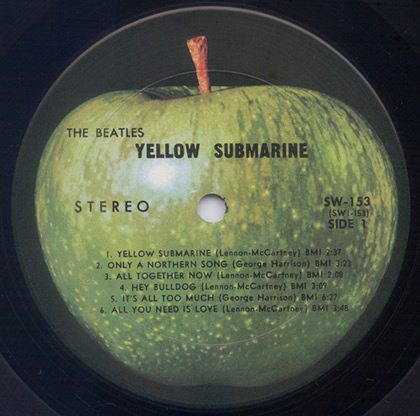 Since mono albums were no longer being manufactured in America by this time, the album was only issued in stereo here unlike in Britain where both mono and stereo versions were made available. This was also the second Beatles album released on their own Apple Records label. It peaked at the #2 spot on the Billboard album chart just under the “White Album.” The album first appeared on compact disc on August 25th, 1987 and then in a remastered form on September 9th, 2009. Since mono albums were no longer being manufactured in America by this time, the album was only issued in stereo here unlike in Britain where both mono and stereo versions were made available. This was also the second Beatles album released on their own Apple Records label. It peaked at the #2 spot on the Billboard album chart just under the “White Album.” The album first appeared on compact disc on August 25th, 1987 and then in a remastered form on September 9th, 2009.
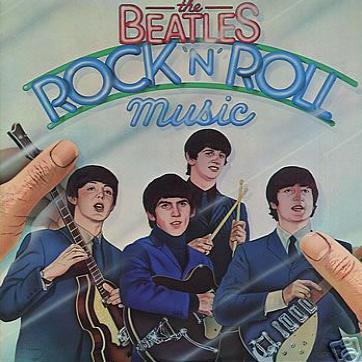 On June 7th, 1976, a compilation album entitled “Rock 'n' Roll Music” was released which was intended as a companion piece to the “Red Album” and “Blue Album” double-discs that came out in 1973. The focus of this double-album was The Beatles harder-edged songs, “Hey Bulldog” being a prime candidate. George Martin was consulted regarding the preparation of this album and, with access to only the Capitol mixes, decided it was necessary to reverse the right and left channels of the original stereo mix for this release. Then, on October 27th, 1980, Capitol separated the albums in this set and re-released them individually, “Rock 'n' Roll Music: Volume 2” containing "Hey Bulldog." On June 7th, 1976, a compilation album entitled “Rock 'n' Roll Music” was released which was intended as a companion piece to the “Red Album” and “Blue Album” double-discs that came out in 1973. The focus of this double-album was The Beatles harder-edged songs, “Hey Bulldog” being a prime candidate. George Martin was consulted regarding the preparation of this album and, with access to only the Capitol mixes, decided it was necessary to reverse the right and left channels of the original stereo mix for this release. Then, on October 27th, 1980, Capitol separated the albums in this set and re-released them individually, “Rock 'n' Roll Music: Volume 2” containing "Hey Bulldog."
One interesting US release of the “Yellow Submarine” soundtrack album occurred in November of 1986. This was the "Original Master Recording" vinyl edition released through Mobile Fidelity Sound Lab in Chatsworth, California prepared utilizing half-speed mastering technology from the original master tape on loan from EMI. This version of the album was only available for a short time and is quite collectible today.
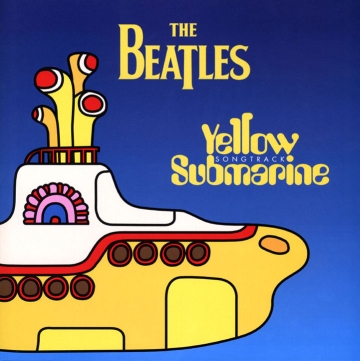 The newly mixed stereo version of the song, as mentioned above, was made available on September 13th, 1999 on the album “Yellow Submarine Songtrack,” a release that coincided with the re-release of the animated movie on VHS and DVD. The album contained all of the Beatles songs contained in the film (except for "A Day In The Life"), all of which were treated to dramatic remixing for amazing effect. "Hey Bulldog" was also included on the promotional sampler of this album, which was released simultaneously. The newly mixed stereo version of the song, as mentioned above, was made available on September 13th, 1999 on the album “Yellow Submarine Songtrack,” a release that coincided with the re-release of the animated movie on VHS and DVD. The album contained all of the Beatles songs contained in the film (except for "A Day In The Life"), all of which were treated to dramatic remixing for amazing effect. "Hey Bulldog" was also included on the promotional sampler of this album, which was released simultaneously.
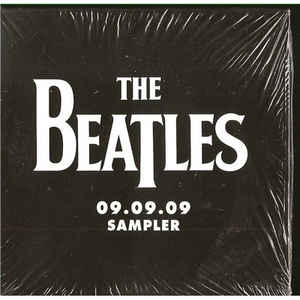 On September 9th, 2009, the never before released mono mix of “Hey Bulldog” was included in the CD box set “The Beatles In Mono” on an album entitled "Mono Masters." Also released on September 9th, 2009, in promotion of the remastered Beatles catalog, the "09.09.09 Sampler" was distributed to retailers and radio programmers, "Hey Bulldog" being featured therein. The vinyl edition of the box set was first released on September 9th, 2014. On September 9th, 2009, the never before released mono mix of “Hey Bulldog” was included in the CD box set “The Beatles In Mono” on an album entitled "Mono Masters." Also released on September 9th, 2009, in promotion of the remastered Beatles catalog, the "09.09.09 Sampler" was distributed to retailers and radio programmers, "Hey Bulldog" being featured therein. The vinyl edition of the box set was first released on September 9th, 2014.
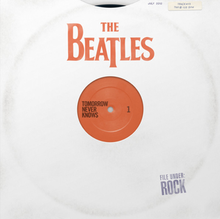 On July 24th, 2012, the iTunes Store, in partnership with EMI Records, released a Beatles compilation album entitled "Tomorrow Never Knows," the purpose of which was to highlight the group's influence on the history of rock music. The album had the approval of Paul and Ringo, as well as the board of directors for the estates of John and George, and was successful enough to peak at #24 on the Billboard album chart. "Hey Bulldog" works very well on this release. On July 24th, 2012, the iTunes Store, in partnership with EMI Records, released a Beatles compilation album entitled "Tomorrow Never Knows," the purpose of which was to highlight the group's influence on the history of rock music. The album had the approval of Paul and Ringo, as well as the board of directors for the estates of John and George, and was successful enough to peak at #24 on the Billboard album chart. "Hey Bulldog" works very well on this release.
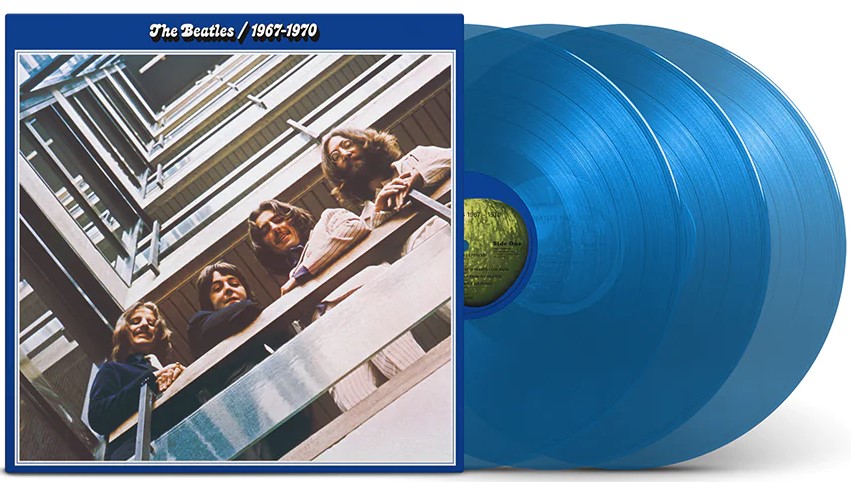 A 50th Anniversay edition of the compilation LP "The Beatles / 1967 - 1970" ("The Blue Album") came out on November 10th, 2023. This expanded release included 12 additional songs for a total of 38 tracks including the newly created mix of "Hey Bulldog" that is detailed above. This release was made available as a double CD and as a triple vinyl release on both black and blue vinyl. A 50th Anniversay edition of the compilation LP "The Beatles / 1967 - 1970" ("The Blue Album") came out on November 10th, 2023. This expanded release included 12 additional songs for a total of 38 tracks including the newly created mix of "Hey Bulldog" that is detailed above. This release was made available as a double CD and as a triple vinyl release on both black and blue vinyl.
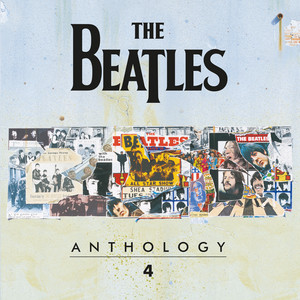 On November 21st, 2025, "Anthology 4" was released on both CD and vinyl, this also being made available within the "Anthology Collection" box set on CD and on vinyl. "Take four" of the rhythm track of "Hey Bulldog" as recorded at EMI Studio Three on February 11th, 1968, as detailed above, was included on this release. On November 21st, 2025, "Anthology 4" was released on both CD and vinyl, this also being made available within the "Anthology Collection" box set on CD and on vinyl. "Take four" of the rhythm track of "Hey Bulldog" as recorded at EMI Studio Three on February 11th, 1968, as detailed above, was included on this release.
Live Performances
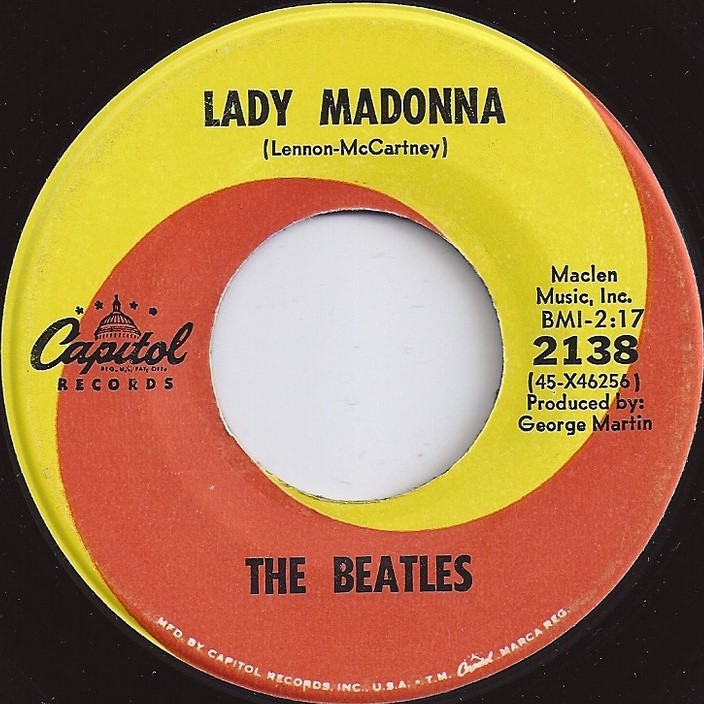 The only performance The Beatles made of the song was in the studio on February 11th, 1968 which, as outlined above, was filmed for use in a promotional clip for the soon-to-be-released single "Lady Madonna." The footage was cut and spliced in such a way as to allow the viewer to believe they were recording "Lady Madonna" at the time but, with careful scrutiny, you could see that they were playing another song entirely. In fact, in order to perpetuate the illusion, an ending scene with Paul at the piano was added specifically because it was he who played piano on "Lady Madonna" and not John, who is pictured at the piano elsewhere in this clip. The only performance The Beatles made of the song was in the studio on February 11th, 1968 which, as outlined above, was filmed for use in a promotional clip for the soon-to-be-released single "Lady Madonna." The footage was cut and spliced in such a way as to allow the viewer to believe they were recording "Lady Madonna" at the time but, with careful scrutiny, you could see that they were playing another song entirely. In fact, in order to perpetuate the illusion, an ending scene with Paul at the piano was added specifically because it was he who played piano on "Lady Madonna" and not John, who is pictured at the piano elsewhere in this clip.
As you can understand, many fans wondered if this footage, as well as possible leftover footage, could be put together with the audio recording of “Hey Bulldog” to create a video. In 1999, the wondering was over.
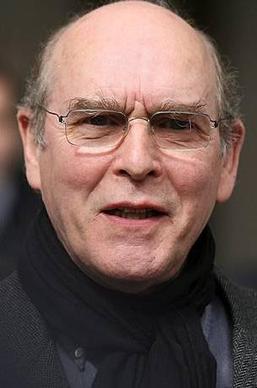 In a 1999 interview, George Harrison explained: “We now have an unreleased video of 'Hey Bulldog,' as you know. When we were in the studio recording 'Bulldog,' apparently it was a time when they needed some footage for something else, some other record ('Lady Madonna'), and a film crew came along and filmed us. Then they cut up the footage and used some of the shots for something else. But it was Neil Aspinall who found out that when you watched and listened to what the original thing was, we were recording 'Bulldog.' This was apparently the only time we were actually filmed recording something, so what Neil did was, he put (the unused footage) all back together again and put the 'Bulldog' soundtrack onto it, and there it was!” In a 1999 interview, George Harrison explained: “We now have an unreleased video of 'Hey Bulldog,' as you know. When we were in the studio recording 'Bulldog,' apparently it was a time when they needed some footage for something else, some other record ('Lady Madonna'), and a film crew came along and filmed us. Then they cut up the footage and used some of the shots for something else. But it was Neil Aspinall who found out that when you watched and listened to what the original thing was, we were recording 'Bulldog.' This was apparently the only time we were actually filmed recording something, so what Neil did was, he put (the unused footage) all back together again and put the 'Bulldog' soundtrack onto it, and there it was!”
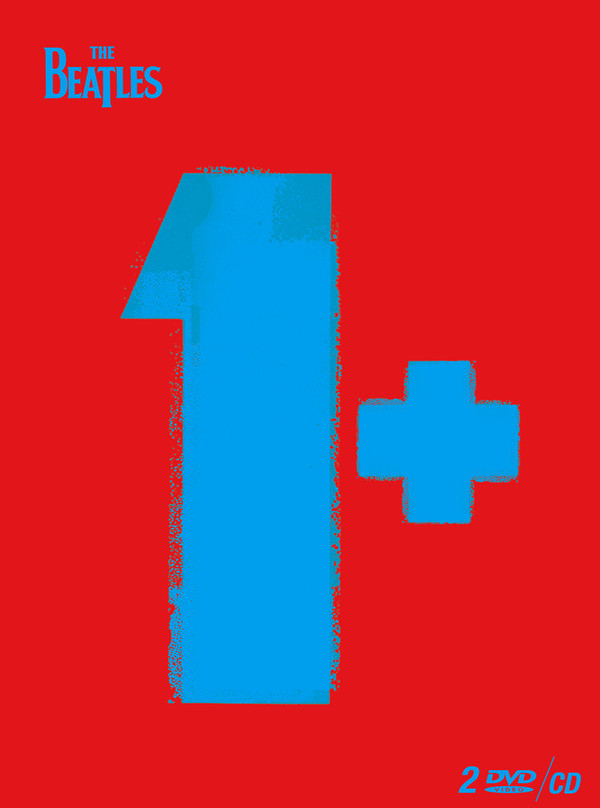 The occasion used to create this video, which includes actual footage of John and Paul singing the humorous ad lib vocal conclusion to the song, was the re-release of the "Yellow Submarine" film on VHS and DVD in 1999. This video was included in the three-disc release of the Beatles video collection entitled "Beatles 1+." The occasion used to create this video, which includes actual footage of John and Paul singing the humorous ad lib vocal conclusion to the song, was the re-release of the "Yellow Submarine" film on VHS and DVD in 1999. This video was included in the three-disc release of the Beatles video collection entitled "Beatles 1+."
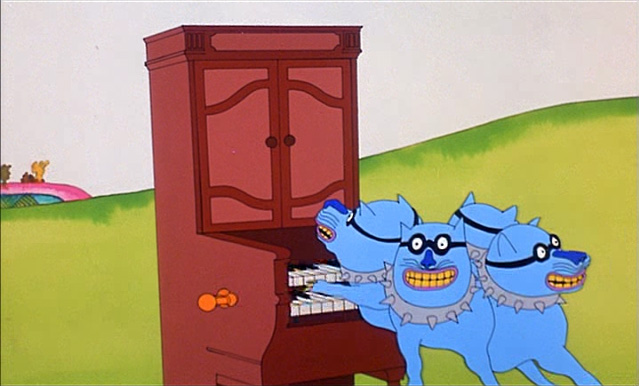 Not to be forgotten is the animated segment for “Hey Bulldog” that was created for the “Yellow Submarine” film, this segment revolving around an upright piano and a four-headed bulldog. This segment originally appeared in the film when it premiered in Britain on July 17th, 1968 but was edited out before the American premier on November 13th of that year. It was then restored and re-inserted into the above mentioned 1999 re-release of the movie on VHS and DVD. Not to be forgotten is the animated segment for “Hey Bulldog” that was created for the “Yellow Submarine” film, this segment revolving around an upright piano and a four-headed bulldog. This segment originally appeared in the film when it premiered in Britain on July 17th, 1968 but was edited out before the American premier on November 13th of that year. It was then restored and re-inserted into the above mentioned 1999 re-release of the movie on VHS and DVD.
Conclusion
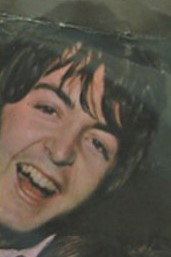 While it appears to be true that The Beatles didn't put that much effort into producing the four required songs for the "Yellow Submarine" soundtrack, recording them all in a lighthearted but quick way, just over three minutes of rock 'n' roll brilliance happened to have emerged in the case of "Hey Bulldog." With its heavy menacing guitar riff, its searing guitar solo, and its sneering lead vocal, the song easily becomes one of the most noteworthy heavy Beatles songs of their later career, which earned it its place on the 1976 compilation album "Rock 'n' Roll Music." While it appears to be true that The Beatles didn't put that much effort into producing the four required songs for the "Yellow Submarine" soundtrack, recording them all in a lighthearted but quick way, just over three minutes of rock 'n' roll brilliance happened to have emerged in the case of "Hey Bulldog." With its heavy menacing guitar riff, its searing guitar solo, and its sneering lead vocal, the song easily becomes one of the most noteworthy heavy Beatles songs of their later career, which earned it its place on the 1976 compilation album "Rock 'n' Roll Music."
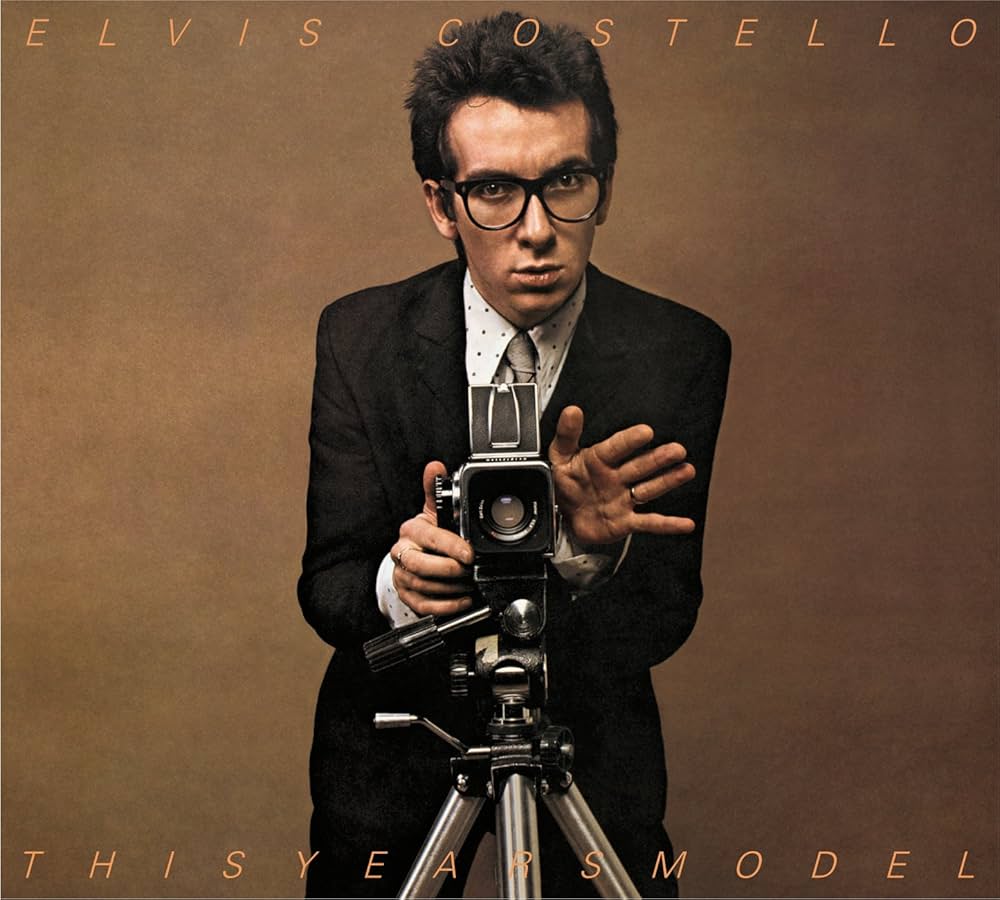 Many other artists noticed this too, the song being covered by the likes of Dave Matthews, Manfred Mann's Earth Band, Toad The Wet Sprocket, Elvis Costello and Alice Cooper. Jeff Lynne and Dave Grohl chose this song to perform on the February 9th, 2014 TV program “The Night That Changed America: A Grammy Salute To The Beatles,” this commemorating the 50th Anniversary of their first appearance on the Ed Sullivan Show. What was originally considered to be a quick throwaway in order to fulfill a contractual agreement has become a respected staple of The Beatles catalog. Many other artists noticed this too, the song being covered by the likes of Dave Matthews, Manfred Mann's Earth Band, Toad The Wet Sprocket, Elvis Costello and Alice Cooper. Jeff Lynne and Dave Grohl chose this song to perform on the February 9th, 2014 TV program “The Night That Changed America: A Grammy Salute To The Beatles,” this commemorating the 50th Anniversary of their first appearance on the Ed Sullivan Show. What was originally considered to be a quick throwaway in order to fulfill a contractual agreement has become a respected staple of The Beatles catalog.
Song Summary
“Hey Bulldog”
Written by: John Lennon / Paul McCartney
- Song Written: February, 1968
- Song Recorded: February 11, 1968
- First US Release Date: January 13, 1969
- First US Album Release: Apple #SW-153 “Yellow Sumbarine”
- British Album Release: Apple #PCS 7070 “Yellow Submarine”
- US Single Release: n/a
- Highest Chart Position: n/a
- Length: 3:09
- Key: C major
- Producer: George Martin
- Engineers: Geoff Emerick, Phil McDonald
Instrumentation (most likely):
- John Lennon - Lead Vocals, Piano (1905 Steinway Vertegrand), voices
- Paul McCartney - Bass Guitar (1964 Rickenbacker 4001S), tambourines, backing vocals, voices
- George Harrison - Lead and Rhythm Guitar (1964 Gibson SG Standard)
- Ringo Starr - Drums (1964 Ludwig Super Classic Black Oyster Pearl), voices
Written and compiled by Dave Rybaczewski
|
IF YOU WOULD LIKE TO MAKE A DONATION TO KEEP THIS WEBSITE UP AND RUNNING, PLEASE CLICK BELOW!
Sign Up Below for our MONTHLY BEATLES TRIVIA QUIZ!
|